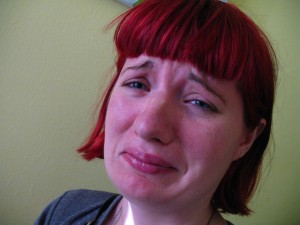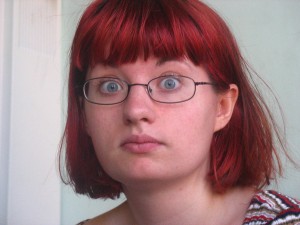Facial expressions are a vital part of communication. What’s funny is that most people talk about facial expressions, but they don’t really know what they are. This post examines what facial expressions are in the context of nonverbal communication.
Facial Movements
Before we can even get into what facial expressions are, we have to understand the idea of “facial movements”. A facial movement is the movement of one or more facial muscles. 1 For example the zygomatic major muscles contract to pull the lip corners up and back towards the ear when a person smiles. You can see the contraction of the zygomatic major muscles in the image below.

The lip corners are pulled up by contraction of the zygomatic major muscle
The mapping between facial movements and facial muscles is not one-to-one. Some facial movements involve contraction of two different parts of the same muscle, while others involve contraction of multiple muscles. The muscle that controls the raising of the eyebrows is called the occipitofrontalis (or just frontalis) and the inner portions can be raised independently of the outer portions. Facial expressions of sadness often include raising of just the inner portion of the eyebrows, while expressions of surprise include raising the inner and outer portions of the eyebrows. You can see this in the two images below:

Just the inner corners of the eyebrows have been raised

Both the inner and outer portions of the eyebrows are raised
Facial Expressions
Now that we know what facial movements are, we can focus on understanding what facial expressions are. As we make various facial movements (i.e. contract and relax our facial muscles) the appearance of our faces change. In the image above, as the lip corners are pulled back and up the cheeks will puff up, the mouth will lengthen etc.
Using this idea we can answer “what are facial expressions?” from the perspective of nonverbal communication:
Facial expressions are the observable results of moving one or more facial muscles, or parts thereof.
So facial expressions are the resulting changes in facial appearance due to one or more facial movements. The key to this definition is that a facial expression is relates to what you can observe. This implies that facial expressions are separate from what they are used for.
Now some people might be thinking “whoa, I thought facial expressions communicated emotions?” The answer is that facial expressions can be used to communicate emotions, but they can also be used for other purposes as well. For instance here are three examples of when people might raise their eyebrows:
During expressions of surprise
To emphasize particular parts of speech
As a greeting
In all three cases the eyebrow raising (i.e. the expression) is the same but the intent and purpose behind it differs.
So when you’re reading a person’s nonverbals, realize that their facial expressions may not always communicate what you think they do.
Fingerprint: FA51BD0B6EB16C44AA763D6AF8FC05D3
Notes:
In the Facial Action Coding System these are called action units (AUs). ↩
Further reading:
The Facial Action Coding System Explained